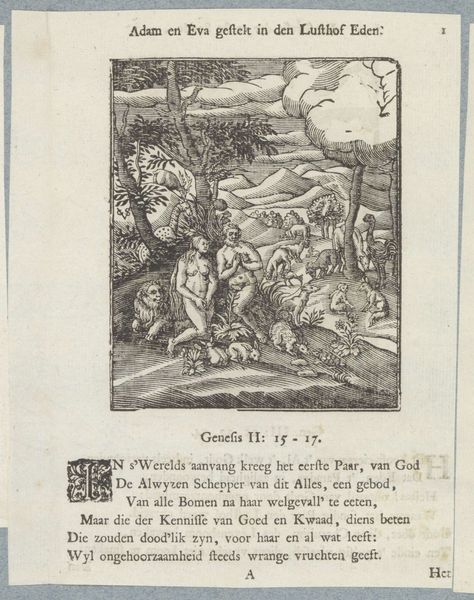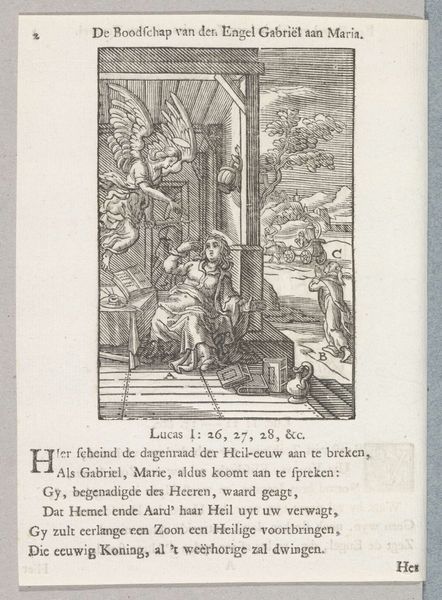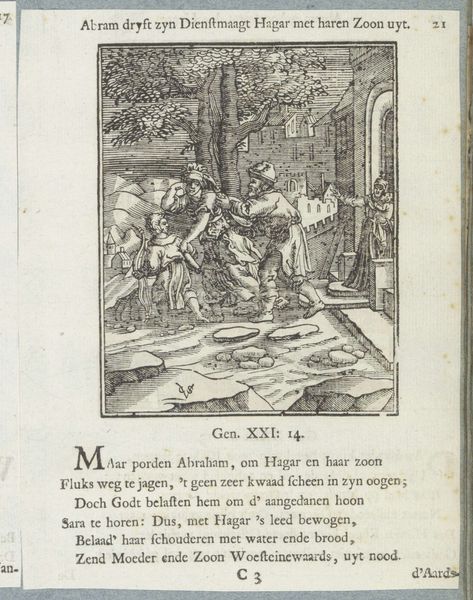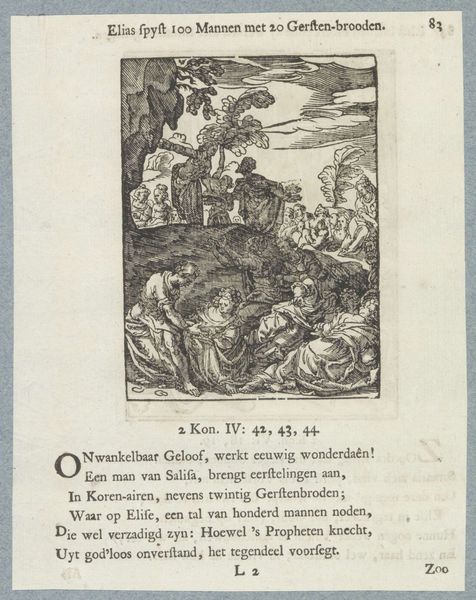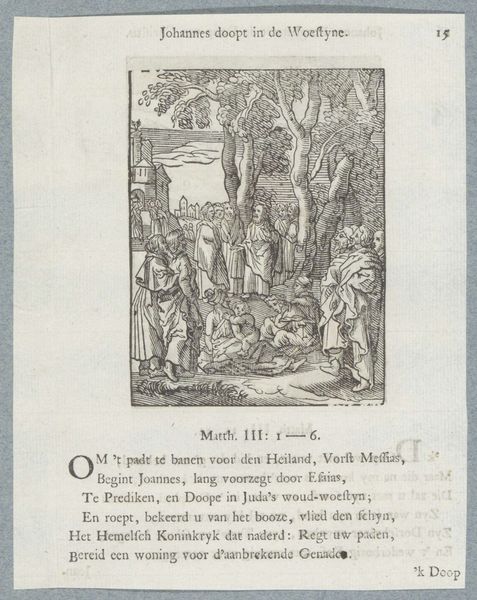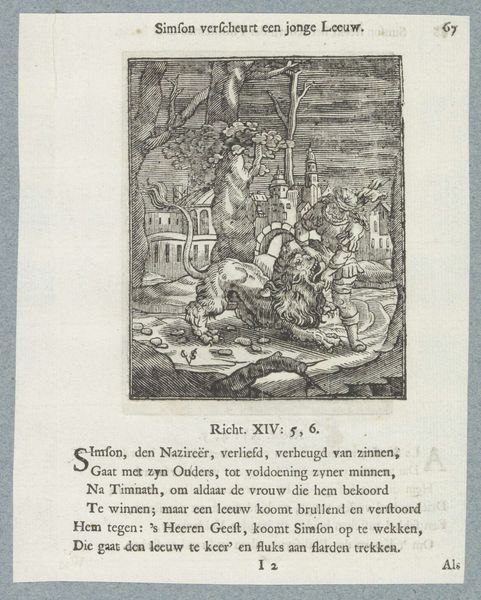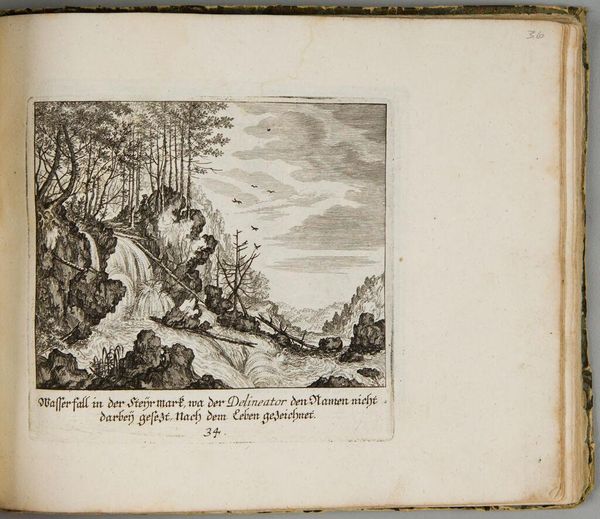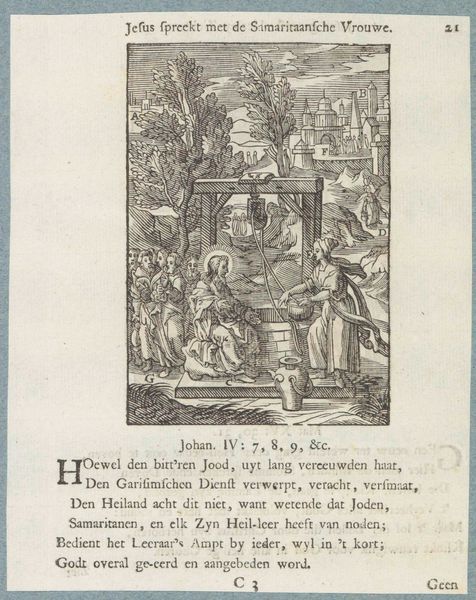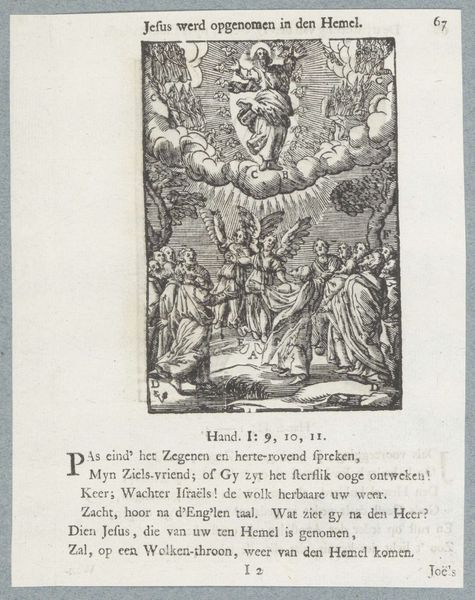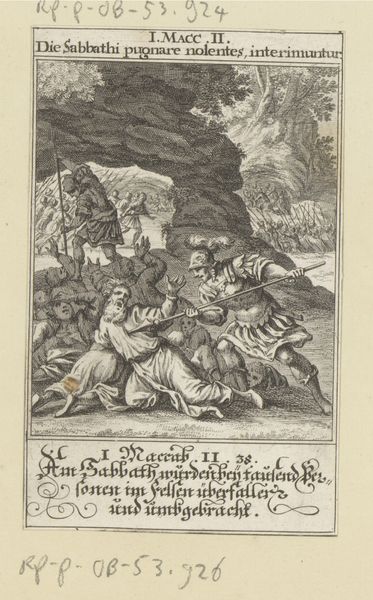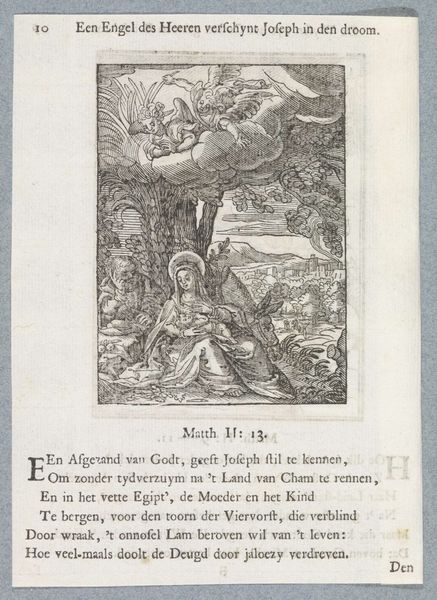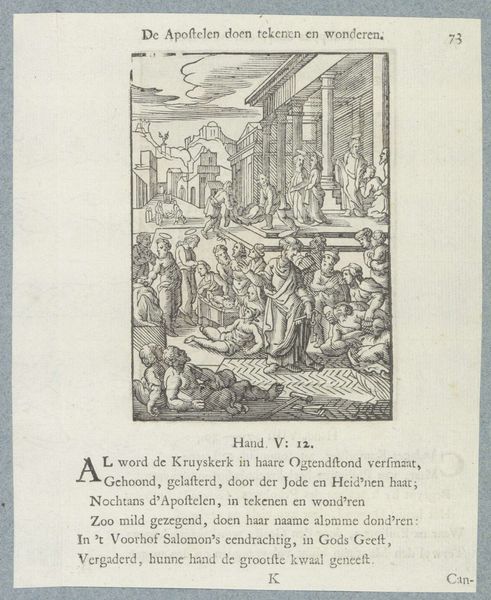
print, engraving
#
narrative-art
#
baroque
# print
#
landscape
#
figuration
#
line
#
history-painting
#
engraving
Dimensions: height 105 mm, width 86 mm, height 171 mm, width 134 mm
Copyright: Rijks Museum: Open Domain
Curator: We’re looking at "The Death of Absalom," an engraving dating roughly from 1645 to 1740. It is currently held at the Rijksmuseum. Editor: The starkness of the black and white really emphasizes the tragedy unfolding. It's quite a violent image, made all the more disturbing by the detail crammed into such a small space. Curator: Indeed. The artist, Christoffel van Sichem II, vividly depicts the biblical story of Absalom's demise. Note how Absalom, suspended by his hair in the oak tree, becomes a visual metaphor for the consequences of ambition and rebellion. The story in 2 Samuel underscores themes of fractured loyalty. Editor: And it is important to consider the very patriarchal, almost feudal power dynamic at play in the history painting itself. His act of rebellion is viewed, obviously, within the constraints of loyalty and hierarchy—yet the act itself reads like an inevitable conclusion to generations of power struggles and abuse. What symbols, or compositional strategies point to that reading, to you? Curator: Well, the positioning of the figures—Absalom hanging vulnerably while Joab and his men are poised with spears—certainly emphasizes the brutal assertion of power. The oak itself carries layers of meaning. While trees in art are often symbolic of nature or refuge, here, the oak becomes an instrument of divine justice, ensnaring Absalom and leading to his downfall. Also, the sharp angles and lines certainly evoke the story's harsh conclusion. Editor: It is difficult for me to overlook how the engraver's deliberate use of linear composition also emphasizes the role of power—all that visual rigidity that evokes, for me, very deliberate patriarchal oppression, as though everything here should return to a predestined status quo. And so often this is how the oppressed end up. In the end. Stuck between tree limbs. Curator: And perhaps within that act of rebellion and divine retribution, it exposes the fragility of a patriarchal order, destined to constantly self-destruct… Editor: Leaving us only with tragic portraits and the bare branches of symbolic oak trees. Curator: Food for thought.
Comments
No comments
Be the first to comment and join the conversation on the ultimate creative platform.
